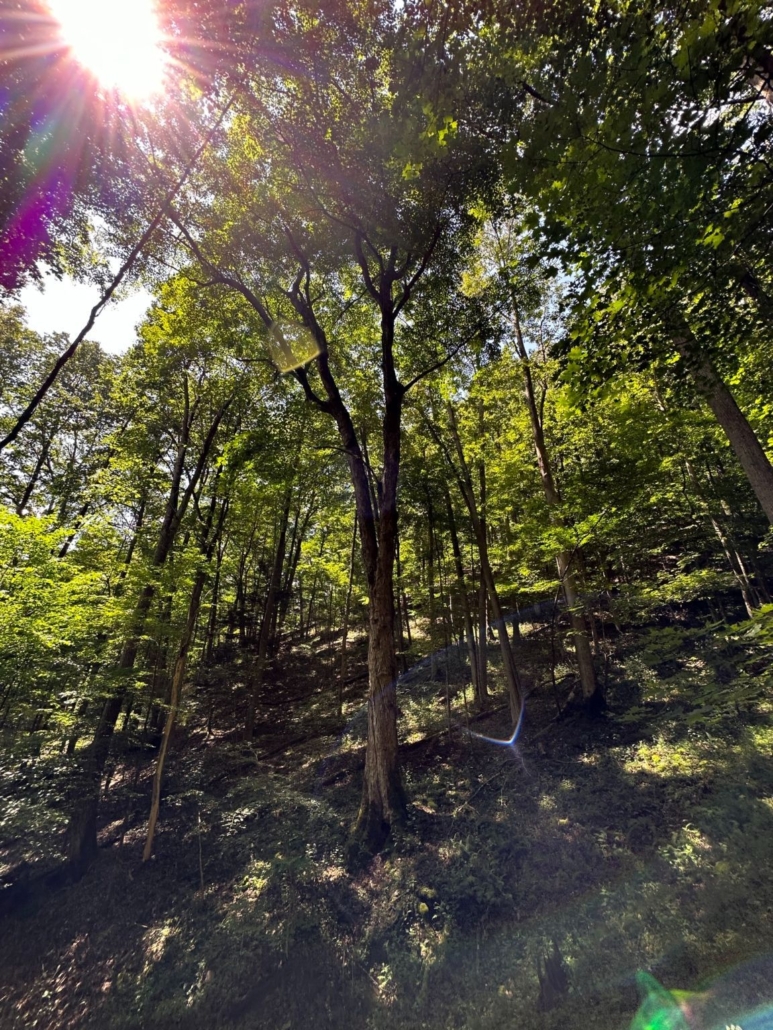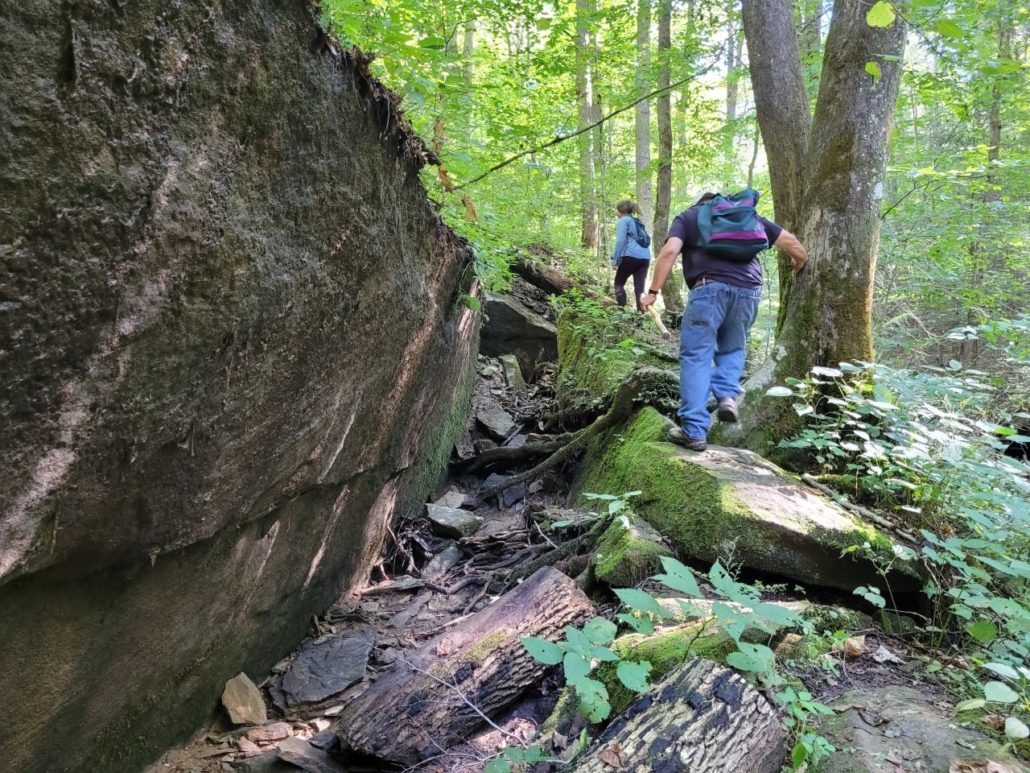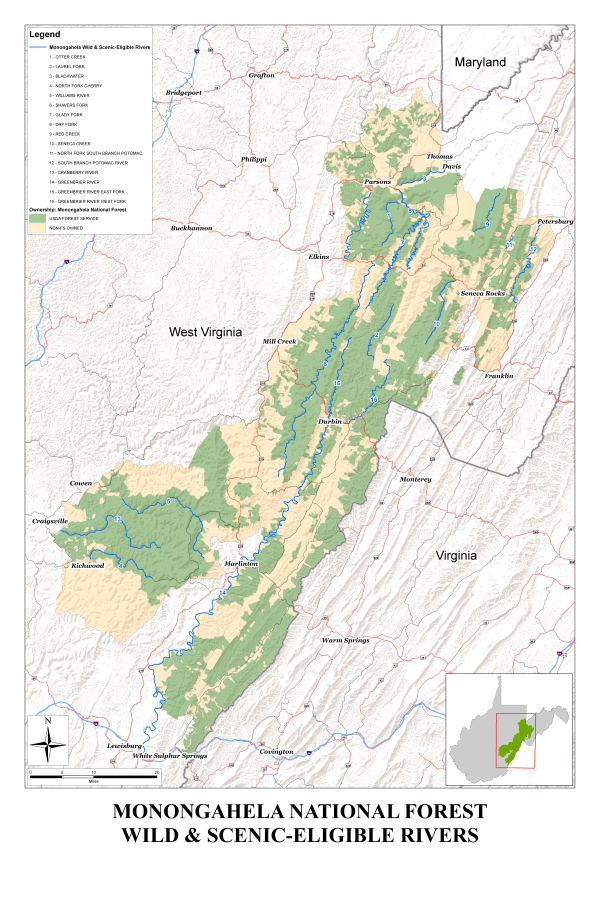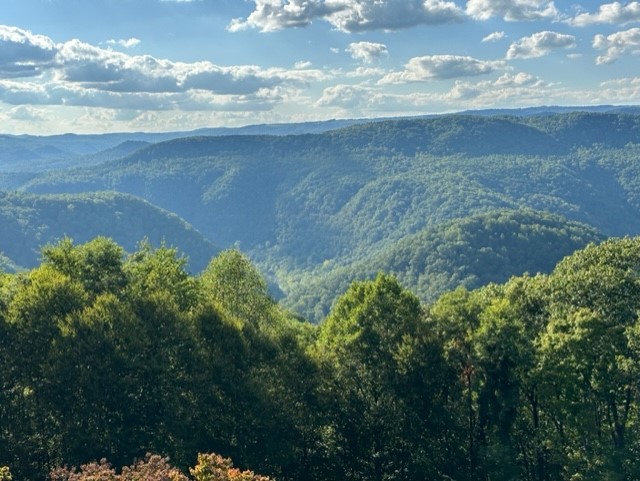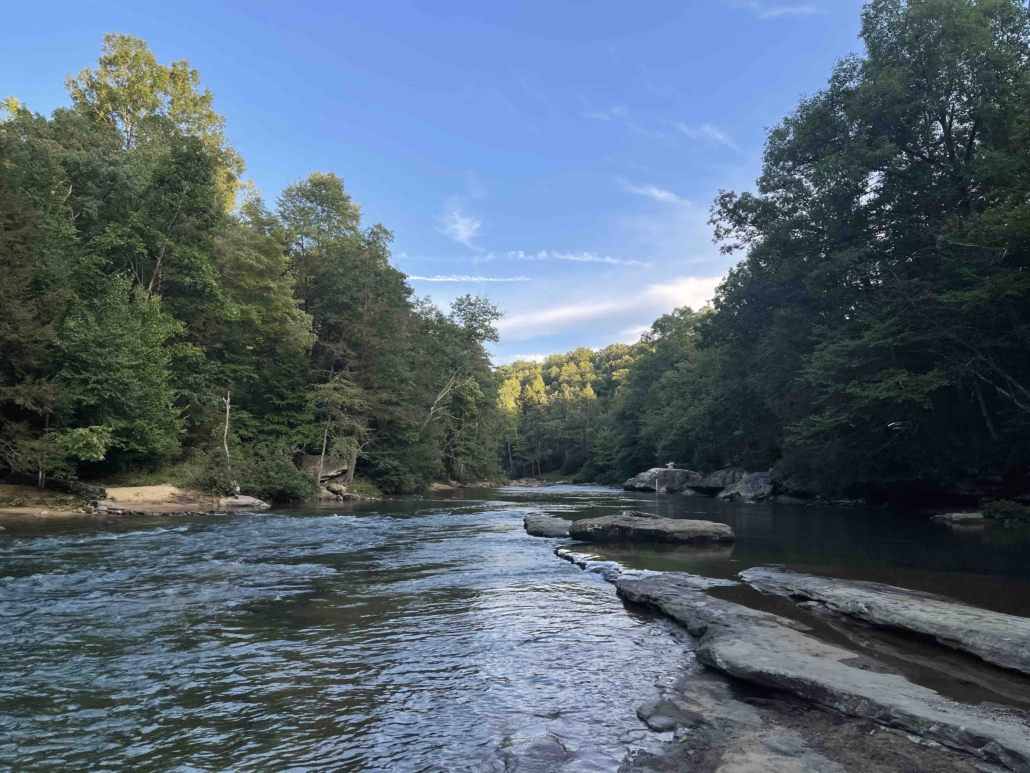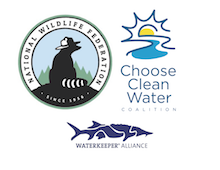West Virginians for Public Lands
June 2024
Forest Service Issues Old Growth Draft Environmental Impact Statement
The USFS recently released its Draft Environmental Impact Statement (EIS) for the “Land Management Plan Direction for Old-Growth Forest Conditions,” which considers the impact of amending all 128 forest plans in one action to consider old growth.
The Draft EIS and related documents are here.
West Virginia is the third most forested state in the U.S., with 78% forests, including almost a million acres of the Monongahela National Forest (MNF) managed by the United States Forest Service (USFS).
The Forest Service’s decisions regarding protecting old growth are vitally important to West Virginians.
Eastern U.S. forests were clear-cut in the first two decades of the 20th century. By 1920, much of West Virginia and other Eastern U.S. (previously) forested areas were barren. Therefore, the most ‘mature’ forests in these areas are about 80-100 years old.
Policies or definitions of “old growth” must consider the unique circumstances in the Mountain State.
Light dances through the Mon National Forest.
Public comments are welcome, and we are still studying the draft of the EIS. Expect an update next month with some suggested talking points and an easy way to express your opinion on this sweeping agency proposal.
While it makes sense to assess all forests simultaneously, each forest will have unique issues that must be considered.
As we review the EIS, we will be looking for answers to the following concerns:
- The current Mon Forest definition for ‘old growth’ may be too restrictive and fail to protect smaller groups of locally significant trees.
A one-size-fits-all approach to old and older growth may not reflect the actual conditions of forests in West Virginia and the Eastern United States. - Old trees and areas deemed old or older growth are essential carbon sinks. Early succession planning is the best way to ensure maximum carbon storage. Timbering plans must emphasize the protection of old trees and utilize an uneven-aged system, not clearcutting or some other even-aged system.
- The Forest Service should take an eco-system and watershed-scale approach to decisions regarding older growth. Forest Service actions regarding older trees or old-growth areas should include the amount of private timber acres harvested in an area and calculations of the carbon storage impacts of private actions.
The Forest Service is assessing older and old-growth areas and trees as a result of President Biden’s Executive Order (EO) 14072. This EO requires all agencies to “manage forests on Federal lands, which include many mature and old-growth forests, to promote their continued health and resilience; retain and enhance carbon storage; conserve biodiversity; mitigate the risk of wildfires; enhance climate resilience; enable subsistence and cultural uses; provide outdoor recreational opportunities; and promote sustainable local economic development.”
Good News for Coonskin Park: FAA Public Meeting about New Plans
Hikers enjoying the forested trails in the Charleston area Coonskin Park.
The Federal Aviation Administration (FAA) and airport previously announced a “pause” on runway expansion – a victory for our Coonskin Park!
There will be a Public Meeting on July 9, 2024, to discuss the pause on the runway plans and the new plans for terminal expansion. Join us from 2:00 p.m. to 4:00 p.m. or from 6:00 p.m. to 8:00 p.m. at the Embassy Suites, 300 Court Street, Charleston, West Virginia. More information can be found here.
The FAA will accept comments on the runway expansion pause and the revised terminal concept at the meeting. Comments can also be submitted by email to comments@yeagerairporteis.com until 5 p.m. Tuesday, July 23, 2024.
Here’s some recent news coverage.
Mon Forest Headwaters: A Legacy of OUR Waterway of Life
The U.S. Forest Service identified 16 waterways within the Monongahela National Forest as eligible for Wild and Scenic designation. Studies in the 1980s and 1990s found that these 16 free-flowing waterways had one or more outstanding remarkable values.
What’s an “outstanding remarkable value?” Scenery, recreation, and species and habitat protections are some of the many characteristics that permanent safeguards can ensure will be available for future generations. The National Park Service can tell you more about outstanding remarkable values.
As shown on the map, the 16 waterways are the Blackwater, the East Fork of the Greenbrier, the West Fork of the Greenbrier, the Greenbrier mainstem, Shavers Fork, Dry Fork, Glady Fork, Laurel Fork, Otter Creek, Red Creek, Seneca Creek, North Fork of the Cherry, Cranberry, Williams, South Branch of the Potomac, and the North Fork of South Branch of the Potomac.
Simply put, permanent safeguards ensure our legacy of clean drinking water, healthy aquatic ecosystems, and water and nature-based recreation.
West Virginians believe you can have both ecosystem safeguards and economic opportunities. The average recreational user of a protected waterway spends $99.00 per person per day or $1.62 per river mile per day. Visits also generate indirect community economic benefits such as increased employment not directly involved in new outdoor recreation opportunities including restaurants and other businesses. Once again, public lands and waters mean business.
We’ve been asking the question: What is the best way to protect our precious and irreplaceable Mon Forest Headwaters? A research study from the West Virginia University “Bridge Initiative” on Science and Policy recommends a Headwaters Legacy Act. Interviews with recreation users of the Mon Forest recommended protecting the headwaters and numerous other policy safeguards for these important areas.
Here’s some more information about the importance of Mon Forest Headwaters. We also want YOUR opinion: tell us your concerns and ideas about permanent protections for Mon Forest Headwaters. After all, the Candy Darters and Hellbenders are depending on us!
Quick Takes on Our Public Lands News! ! Public Lands Need YOU!
Iconic view of the Bluestone River from Pipestem State Park. The Bluestone is West Virginia’s only Wild and Scenic River.
State and federal legislation is only a tiny part of Public Land advocacy for the Mountain State. What is the best way to show your love of our local, state, and national public lands? Go see them! Here are some quick takes on important news and opportunities to get involved:
- West Virginia Day – our 161st birthday – is a great time to remember all the great things in the Mountain State. Read and listen here for some of the best of WV – including our Wild and Wonderful Public Lands. Let WV Rivers know what you value about our great state!
- Public Comments on the content (scope) for a Supplemental Environmental Impact Statement (SEIS) on proposed Corridor H routes from Parsons to Thomas/Davis have closed. We are awaiting a draft SEIS. If the decision is made to build the Parsons to Thomas/Davis portion, the route must minimize impacts on water resources, protect trout and high-quality streams, avoid abandoned mine lands, and protect our public lands and wild and scenic eligible waterways. More information about Corridor H is here and here.
- We all want to see “the best” public lands. Part of thoughtful Public Lands Stewardship is helping visitors learn the best ways to treat our public lands and ensure that the unique values remain for the next visitor and the next generation. The “Dolly Sods Wilderness Stewards” from WV Highlands Conservancy are stationed at popular trailheads and greet and assist visitors hiking in Dolly Sod while offering resources, Leave No Trace practices, values of the wilderness, and other helpful tips.
- YOUR Advocacy for Public Lands Matters: In the past year, you have sent more than 50,000 emails, letters, calls, and petitions to your elected officials about the importance of public lands. Need some advocacy pointers? Helpful hints are provided by the WV Environmental Council, WV Trails, and West Virginia Rivers Coalition. Want to meet in person with your WV State Senators (you have two of them) or Delegate? Learn more about being a District Advocate. When you’re ready, we invite you to sign up. We’ll help you every step of the way.
- Support our public lands: West Virginians for Public Lands (WVPL) believes that West Virginia public lands, waters, and the wildlife that inhabit them are intrinsically valuable, and these special areas should be preserved. Is this something that you believe in, too? We’d love you, your business, or your organization to be a part of this vision. Sign up here or click the button below.
- Public Lands on Social: Be sure to tag WVPL on your pictures! Use #wvpubliclands for any local, state, or national public land, and use #MonForestHeadwaters when you enjoy a Mon Forest headwater. Check us out here:
- FACEBOOK: wvpubliclands
- X (Twitter): @WV4PublicLands
- Instagram: wvpubliclands
Meet Your Public Lands: Audra State Park
The scenic Middle Fork at Audra State Park.
First alphabetically, and located near Buckhannon, is Audra State Park.
The Middle Fork flows through this State Park, with hiking trails leading to waterfalls and overlooks. Don’t miss the rhododendron thickets in bloom and the boardwalks built along the Alum Cave’s overhanging ledge.
Audra provides 67 campsites (39 electrical!), with facilities and a camp store. Swimming and fishing are popular on the Middle Fork.
Check out the Trail Map for hiking and biking details.
Audra State Park is located at 8397 Audra Park Rd, Buckhannon, WV 26201.


